Our flight to India was via Kuala Lumpur with AirAsia, the low cost carrier we have flown with several times over the last few years. Leaving Vientiane we had an eight hour daytime layover at Kuala Lumpur airport before our night flight into Cochin (Kochi) and we spent the majority of the time sitting in the airports McDonald’s restaurant. Now, for those who know us well, this establishment would not be our first choice of a place to hang out – in fact the girls are lucky if they get to McDonald’s three times a year. However, it provided tables and chairs, an out of the way corner, and cheap eats to be able to remain at the table for an extended time without being moved on. When the girls got their Kids Meal and a new toy each, this alone provided a couple of hours entertainment play acting over the table! We were able to use the free wi-fi for Phoebe and Immi to skype with their cousins and we also plugged into a power point so the girls could watch a video via laptop. The time went surprisingly fast.
Fort Kochi is in the state of Kerala, in the South-West corner of India (for our current whereabouts go to the ‘Start Here tab and go down to ‘Itinerary and Map’ and you will see the interactive map). The four hour flight got us in to Cochin at 11pm local time (but 2am for our body clock) and the girls were pretty exhausted but held up surprisingly well. We had booked a homestay at Fort Kochi for our first week and thankfully had requested an arrival transfer. We were so glad to see our name and driver waiting as it was another hour long journey to the homestay. First impressions: the amount English advertising billboards everywhere, and relief that it didn’t look too bad (cleanliness-wise) looking out the window of our taxi. I haven’t felt this nervous about a destination for decades! I am apprehensive and excited at the same time about what’s in store.
Beena’s Homestay was with a Hindu family, and Beena was waiting up for our arrival at close to midnight and we soon collapsed into our basic triple bedded room and slept soundly until woken by the goat from next door and the rooster across the road.
Homestays are a great way to go – much more personable that hotels or even the guesthouses we used in Asia. They are popular in southern India with the Tripadvisor feedback consistently high for the hospitality, clean basic accommodation and food provided. Some homestays provide breakfast only, and some all meals depending on how remote they are. Beena’s homestay provided breakfast and dinner, as the township was only a 10-15 minute walk away with a variety of cafés and restaurants available.
This suited us as it was a great introduction to the local cuisine in a safe environment. We stayed in one of the four bedrooms on the ground floor, with the first floor being the main living area for the family and dining room for guests, and a recent addition is the top floor providing a further 4 rooms for guests.
Sudi and Beena introduced us to Keralan food that features rice, fish, coconut, and vegetables as the staple dishes. Kerala is on the Malabar coast and so coconuts are in plentiful supply. They are chopped, grated or used as a garnish in almost every dish. The coconut milk or paste (straight from the coconut – not from the tin/jar!) is used to thicken sauces, not to mention cooking in coconut oil too. Chillies, curry leaves, tamarind and cardamom are used extensively as well as mustard seeds which are added to almost everything. Cassava or tapioca is also quite often used and one the girls usually loved as it was usually offered in a more natural state ie. not looking like a wet curry with many unrecognisable vegetables!
Kerala is known as the ‘land of spices’ and the food is all about flavour and aromas. Once Sudi tempered down the spices in the dishes (the girls kept going just for the chapatti bread and rice), Phoebs and Immi really gave the dishes a good try. Rice in various forms accompanied every meal, from straight rice as well as Dosas (like a pancake made from rice batter, in southern Kerala it is thicker and quite spongy, in northern Kerala and neighbouring state it is larger and crisper), Appams (bowl shapped thin pancakes made from fermented rice flour), and Idi-appam (same as appams but shredded like noodles). Dhal dishes (green or red lentils, peas or beans such as black garbanzo beans) accompany every meal and are often quite spicy. Dishes collectively known as curries to us at home are almost unheard of here as each dish has its own more descriptive name such as Sambhar and Rasam. Indian food generally is predominantly vegetarian and many ‘wet’ vegetable dishes using gourds, beans and beetroot, eggplant, carrot and cauliflower are always mixed with coconut and spices. Apart from reduction in chilli for our western palate, it was very authentic Keralan food and one of the best reasons for travelling is getting to try all these wonderful combinations of food. We all loved it (well most of it!). One day the girls even asked if they could help Sudi cut up the vegetables for dinner so were put to work!
Breakfast and dinner were served at 8am and 8pm (later changed to 7pm as 8pm was proving too late for the girls), and was always preceded by the wonderful aroma of coconut and other spices filling the dining room. Breakfast was far removed from the usual eggs we were used to in Asia. It usually involved idi-appams served with a spicy dhal dish, or sometimes with a curried egg, tomato and onion concoction. They would, however, serve some toast with honey and jam. After the third day we requested if it were possible to just have a plain fried egg each for the girls which our hosts were only too happy to do.
The first day we didn’t venture out until the afternoon to walk the kilometre or so into Fort Kochi. The town is such a fusion of history including discovery and trading by the Chinese, Portuguese, Dutch, and more recently British. Their influences can be seen everywhere in the buildings: colonial bungalows, wood panelling, carved doors and wide verandah’s.
The streets have an olde worlde charm with European style living quarters.
There is the unauthenticated residence of Portuguese seafarer and explorer Vasco de Gama, and St Francis Church is considered to be India’s oldest church dating from 1503. This church was the first resting place of Vasco de Gama before his son collected his mortal remains and returned them to Lisbon 14 years after his death. The church was originally Roman Catholic during Portuguese period to 1663, it changed to Dutch reform before turning Anglican from 1804-1947, it now governed by the Church of South India.
Fort Kochi was also once home to the mighty Dutch East India Company. The links to its seafaring past could clearly be seen when we hired a couple of bikes and explored the cramped streets and the old port area of Mattanchery where old warehouses still store and trade spices, tea, and coffee through the wonderful old timber doors – it just exudes the history of the exotic spice trade of the East and the aromas were amazing!
Adding even more spice to the mix is an area called Jewtown where a Jewish synagogue still stands and where I spotted the ‘Star of David’ visible high up on a couple of buildings.
The only down side to our time here was that the temperature and humidity during the day was just too high for a lot of physical activity, and unfortunately no pool or swimable beach (too polluted) in sight. So back to the cold shower only bathroom at our homestay to cool down!
Just off the Vasco-de-Gama Square was the tourist symbol synonymous with Kochi – The Chinese Fishing Nets. Legend has it that that the fishing nets were introduced by Chinese explorer Zheng-He in the 13th century. They are fixed land installations used for an unusual method of fishing.
The entire structure is about 10 metres high and spread about 20 metres wide over the water. The nets are set up on bamboo and teak poles and held horizontal by huge mechanisms, which lower into the sea. They are counter-weighted by huge rocks tied to ropes and take around four men to haul up.
The nets are lowered into the water for a short time, only a few minutes, before hauling up the meagre catch and taking it straight to the footpath for sale or to a street entrepreneur for cooking. The slow rhythm of their operation is quite hypnotic to watch and very photogenic. We went back a couple of times just to sit and watch, hence the difference in sky colour seen in the photos over a few days.
The Chinese fishing nets are to Kochi, what the painted face of a Kathakali actor is to the state of Kerala, and one night Beena organised tickets for us to attend the small local theatre for the Classical Dance-Drama of Kerala. Kathakali originated in Kerala during the 17th century and is noted for the bright make-up of the characters which is applied to the actors on stage so the audience can see the characters come to life. Watching this for an hour before the show begins gives an appreciation for the work involved.
Kathakali involves elaborate costumes, detailed gestures and body movements presented in time with the music of percussion (drums). Kathakali is considered to be a combination of five elements of fine art: Expressions (amazing eye movements and facial expressions), Dance ( with emphasis on movement of hands and legs), Enactment (telling of a story through hand gestures) Song accompaniment and Instrument accompaniment (drums).
Traditionally there are said to be 101 classical Kathakali stories that were originally composed to last a whole night or more than 8 hours. Fortunately now they do a concise option that condenses part of the story so you can see good and evil portrayed in a relative short time span of 1 and a 1/2 hours. As well as the detailed explanation and demonstrations of the gestures and eye movements, we were also given a written explanation of the story and characters so we could follow along. The girls especially liked the eye movements and were doing ‘Kathakali eyes’ for days after.
One day we did a day trip from Fort Kochi to do the ‘Keralan Backwaters ’. The Backwaters are a network of interconnecting canals, rivers, lakes and inlets, a labyrinthine system formed by more than 900 km of waterways.
The backwaters have a unique ecosystem: freshwater from the rivers meets the seawater from the Arabian Sea Many unique species of aquatic life including crabs, frogs and mudskippers, water birds such as terns, kingfishers, and cormorants and animals such as otters and turtles live in and alongside the backwaters. Palm trees, pandanus shrubs, various leafy plants and bushes grow along the waters edge.
Many tour companies offer the Backwater trips as an overnight excursion, but due to the amount of inconsistant feedback we elected to do just a day trip that incorporated a Rice Barge as well as a canoe ride along the waterways. We were pleased with our decision and certainly didn’t feel like we had missed anything!
In all, our first week in India was surprisingly easy. This was in no doubt due to the fact that Kerala is India’s most socially progressive society. It has the highest human development index amongst all Indian states, the highest literacy rate at 94% and highest life expectancy. It has the highest percentage of Christians in India at around 20% after Hindu and Islam. It also ranked as the least corrupt among Indian states and is considered the cleanest and healthiest state with five of the ten most livable cities in India in Kerala. We also found out that Beena works as a health inspector, so we couldn’t have played the start of our Indian odessey safer if we tried!
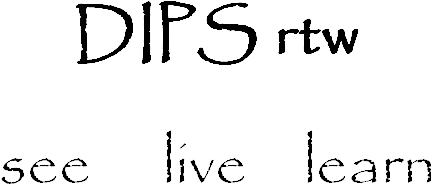
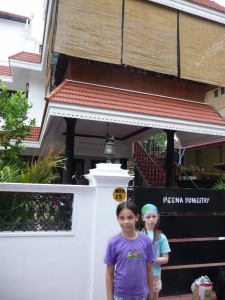
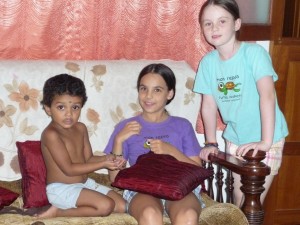
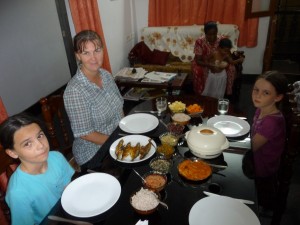
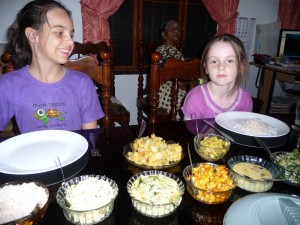
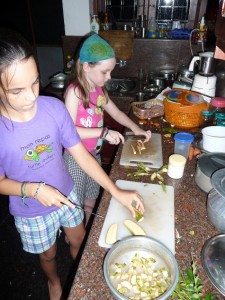
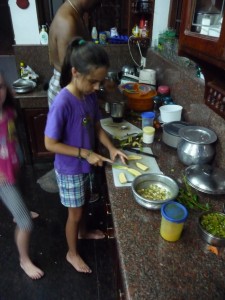
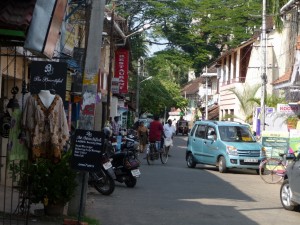
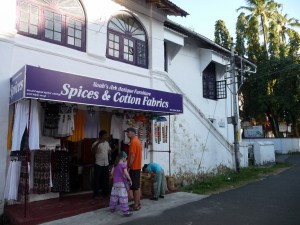
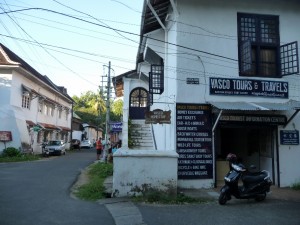
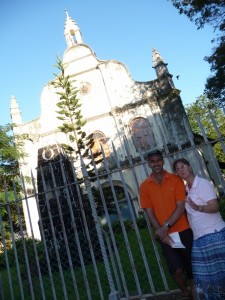
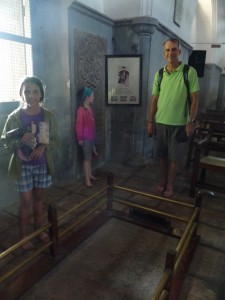
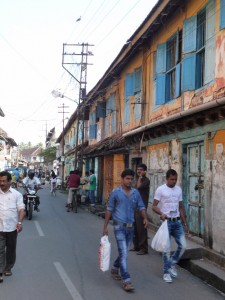
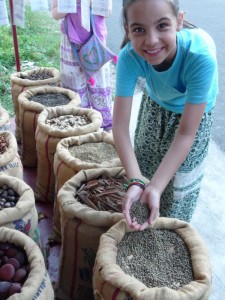
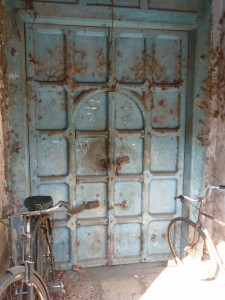
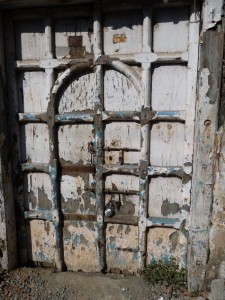

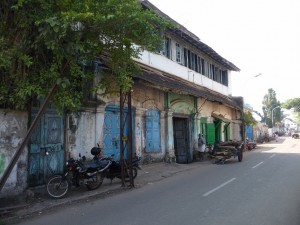
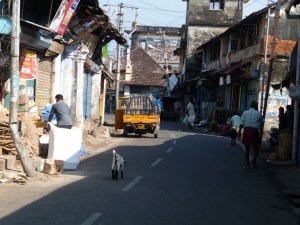
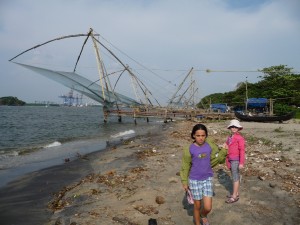
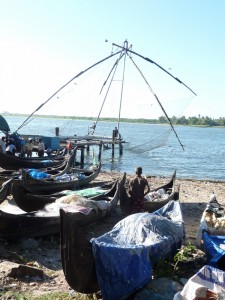
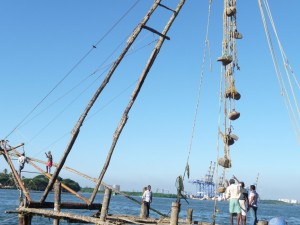
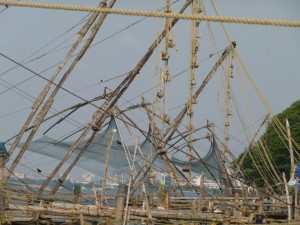
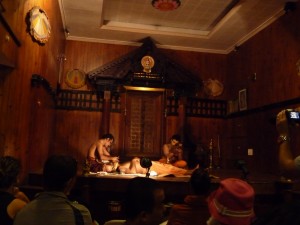
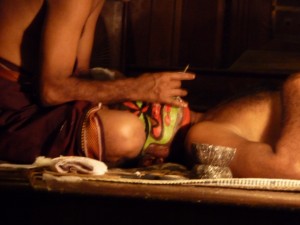
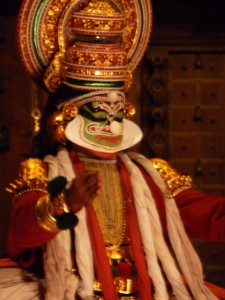

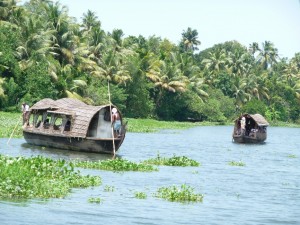
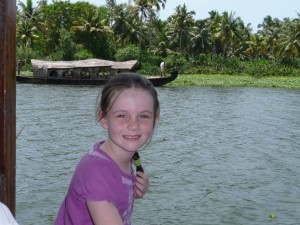
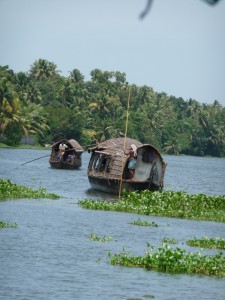
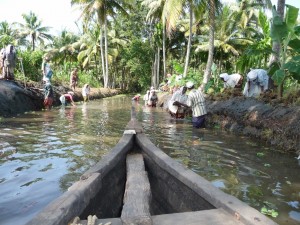
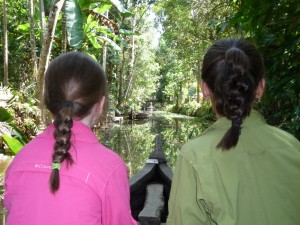
Hi my dear adventurers! India in this instance sounds very enticing. Some good planning done here! Doesn’t look as if you’re tiring of your travels – in fact you all seem to be thriving on the experiences, the food, the people, and the scenery. Go to it – and enjoy. Love from Nanna & Dipsy